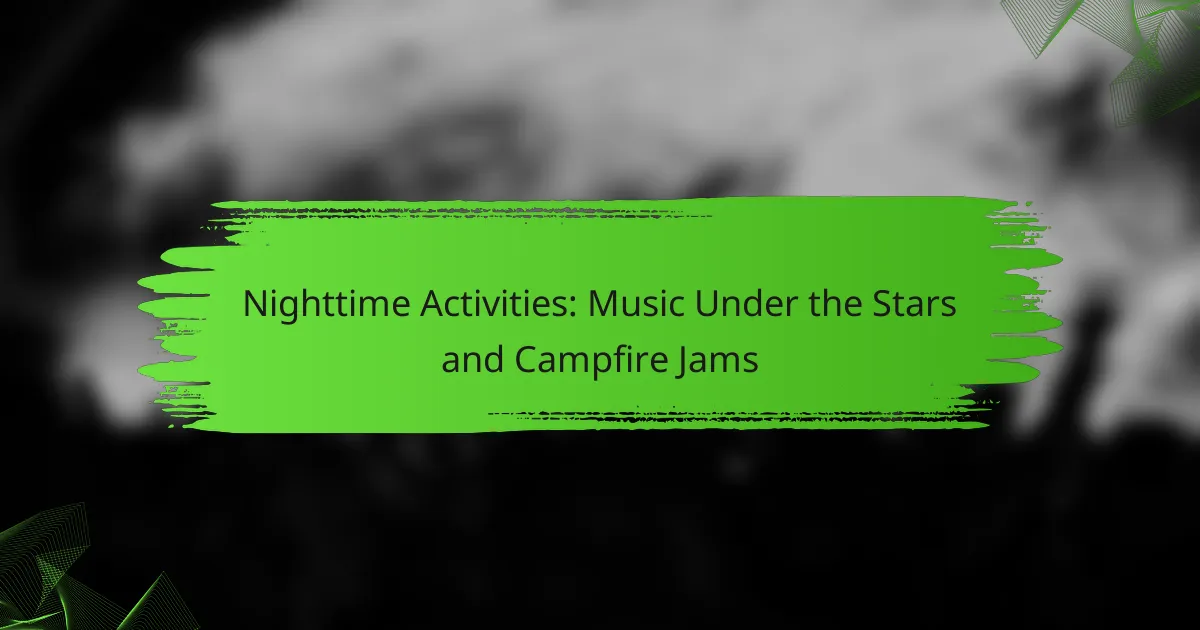Cultural performances such as dance, theater, and storytelling play a vital role in showcasing the rich artistic heritage of communities. These events not only entertain but also foster a deeper understanding of diverse traditions and support local artists. Engaging with these performances can enhance personal experiences and strengthen community bonds.

What are the best cultural performances in New York City?
New York City is renowned for its vibrant cultural performances, featuring a mix of Broadway musicals, Off-Broadway shows, dance at Lincoln Center, and storytelling events at The Moth. Each offers unique experiences that reflect the city’s diverse artistic landscape.
Broadway musicals
Broadway musicals are a hallmark of New York City’s cultural scene, showcasing large-scale productions with elaborate sets and talented casts. Popular shows often include a mix of classic and contemporary themes, attracting millions of visitors each year.
Tickets can range from affordable to premium prices, with discounts available for same-day performances at the TKTS booth in Times Square. It’s advisable to book in advance for popular shows to secure the best seats.
Off-Broadway shows
Off-Broadway shows provide a more intimate theater experience, often featuring innovative storytelling and experimental performances. These productions typically have smaller venues and can offer a more personal connection between the audience and the performers.
Ticket prices for Off-Broadway shows are generally lower than those for Broadway, making them an accessible option for theater enthusiasts. Many shows also offer rush tickets or lottery systems for last-minute attendees.
Dance performances at Lincoln Center
Lincoln Center is a premier venue for dance performances, hosting renowned companies such as the New York City Ballet and the Alvin Ailey American Dance Theater. The center features a variety of styles, from classical ballet to modern dance, appealing to a wide audience.
Attending a performance at Lincoln Center can be a memorable experience, with tickets available at different price points. Consider attending a matinee for potentially lower prices and a less crowded atmosphere.
Storytelling events at The Moth
The Moth hosts storytelling events that celebrate the art of personal narrative, where individuals share true stories from their lives. These events foster a sense of community and connection, often leading to powerful and emotional experiences for both the storytellers and the audience.
Tickets for The Moth events can be purchased in advance, but many performances also offer a limited number of tickets at the door. Participating in a storytelling workshop can also enhance your appreciation for this unique form of cultural expression.

How to choose a cultural performance?
Choosing a cultural performance involves understanding your interests and those of your audience, evaluating the type of performance, and considering feedback from previous attendees. This approach ensures a rewarding experience that resonates with everyone involved.
Consider audience preferences
Understanding the preferences of your audience is crucial when selecting a cultural performance. Consider factors such as age, cultural background, and interests, as these can significantly influence enjoyment. For example, families may prefer family-friendly shows, while younger audiences might enjoy contemporary dance or theater.
Engaging with your audience through surveys or informal discussions can provide insights into their preferences. This feedback can guide your choice, ensuring the performance aligns with what they are likely to appreciate.
Evaluate performance type
Different types of cultural performances, such as dance, theater, and storytelling, offer unique experiences. Each type has its own style and emotional impact, so it’s important to consider what resonates most with your audience. For instance, dance performances often emphasize visual artistry and movement, while theater may focus on narrative and character development.
Additionally, consider the format of the performance. Live shows can create an immersive experience, while recorded performances might be more accessible and convenient. Weigh the pros and cons of each type to find the best fit for your audience’s expectations.
Check reviews and ratings
Before finalizing your choice, checking reviews and ratings can provide valuable insights into the quality of the performance. Look for feedback on platforms like social media, review sites, or local cultural blogs. High ratings and positive comments often indicate a worthwhile experience.
Be cautious of overly positive or negative reviews, as they may not reflect the general consensus. Aim to read a range of opinions to get a balanced view. This step can help you avoid performances that may not meet your audience’s expectations and ensure a more enjoyable outing.

What are the benefits of attending cultural performances?
Attending cultural performances offers numerous benefits, including enhanced appreciation for diverse traditions and support for local artists. These events foster community engagement and provide a unique form of entertainment that enriches personal experiences.
Enhances cultural understanding
Cultural performances serve as a window into the traditions, values, and stories of different communities. By experiencing dance, theater, and storytelling firsthand, attendees gain insights into the cultural nuances that shape various societies.
For example, a traditional dance performance may illustrate historical events or social issues relevant to a specific culture. This immersive experience helps break down stereotypes and fosters empathy among diverse audiences.
Supports local artists
Attending cultural performances directly contributes to the livelihood of local artists and performers. Ticket sales often provide essential funding for their work, allowing them to continue creating and sharing their art.
Moreover, local events can help artists gain visibility and recognition, which may lead to further opportunities, such as collaborations or invitations to larger festivals. Supporting these performances strengthens the local arts community and promotes cultural sustainability.
Provides entertainment and enjoyment
Cultural performances offer a unique form of entertainment that captivates audiences through engaging storytelling and artistic expression. Whether it’s a lively dance, a thought-provoking play, or a captivating tale, these events provide enjoyment and a break from daily routines.
Many performances are designed to be family-friendly, making them suitable for all ages. Attendees can enjoy a night out while also experiencing the richness of cultural heritage, creating lasting memories in the process.

What are popular dance styles in cultural performances?
Popular dance styles in cultural performances include ballet, modern dance, and hip-hop dance. Each style has unique characteristics, techniques, and cultural significance, making them vital to the arts landscape.
Ballet
Ballet is a highly technical form of dance that originated in the Italian Renaissance courts and later developed in France and Russia. It emphasizes precision, grace, and storytelling through movement, often performed to classical music.
Key elements of ballet include positions of the feet, turnout, and various jumps and turns. Dancers typically train for several years to master the foundational techniques, often starting as young as five or six years old.
When attending a ballet performance, expect a structured program that may include classical pieces like “Swan Lake” or “The Nutcracker,” showcasing the dancers’ technical skills and the choreographer’s artistic vision.
Modern dance
Modern dance emerged in the late 19th and early 20th centuries as a reaction against the strictures of ballet. It encourages individual expression and often incorporates a variety of styles and influences, allowing for greater creativity and freedom in movement.
This dance style often focuses on the use of the body’s natural movements, emphasizing gravity and the floor. Dancers may perform barefoot and use improvisation as a key component of their training and performances.
Modern dance pieces can range from abstract to narrative, often reflecting social issues or personal experiences. Notable choreographers include Martha Graham and Merce Cunningham, who have significantly influenced the genre.
Hip-hop dance
Hip-hop dance is a vibrant and energetic style that originated in urban communities during the late 20th century. It encompasses various styles, including breaking, locking, and popping, and is often performed to hip-hop music.
This dance form emphasizes rhythm, body isolation, and improvisation, making it accessible to a wide audience. Hip-hop dance battles and competitions are common, showcasing individual creativity and skill.
For those interested in learning hip-hop, many community centers and studios offer classes for all ages. Participating in local dance events can also provide valuable experience and exposure to different styles within the hip-hop genre.

What are the key elements of theater performances?
Theater performances are built on several key elements that work together to create an engaging experience for the audience. These elements include the script, acting, set design, and staging, each playing a crucial role in conveying the story and emotions of the performance.
Script and dialogue
The script serves as the foundation of any theater performance, containing the dialogue, stage directions, and overall narrative structure. A well-crafted script not only provides the storyline but also defines character arcs and emotional beats, guiding the actors in their performances.
When developing a script, consider the target audience and the themes you wish to explore. Strong dialogue should feel natural and reflect the characters’ personalities, while also advancing the plot. Aim for clarity and conciseness to maintain audience engagement.
Acting and performance
Acting is the art of bringing characters to life through physical expression, vocal delivery, and emotional authenticity. Performers must embody their roles convincingly, using techniques such as voice modulation, body language, and facial expressions to convey the intended emotions and motivations.
To enhance performance quality, actors should rehearse extensively, developing chemistry with fellow cast members. Feedback from directors and peers can help identify areas for improvement, ensuring that the performance resonates with the audience.
Set design and staging
Set design and staging are critical for creating the visual context of a theater performance. The set must reflect the time period, location, and mood of the story, using props, colors, and textures to enhance the narrative. Effective staging also considers the layout of the performance space, ensuring that all audience members have a clear view of the action.
When designing a set, collaborate closely with the director and lighting designer to create a cohesive aesthetic. Practical considerations, such as budget constraints and safety regulations, should also guide the design process to ensure a successful production.

How is storytelling incorporated into cultural performances?
Storytelling is a fundamental element of cultural performances, serving as a means to convey traditions, values, and emotions. It enhances the audience’s experience by creating a narrative framework that connects them to the performers and the cultural context.
Spoken word events
Spoken word events are dynamic platforms where storytelling is delivered through poetry, monologues, or narratives. These performances often emphasize rhythm, emotion, and personal experiences, allowing the audience to engage deeply with the stories being told.
In many spoken word events, performers may use improvisation and audience interaction to enhance the storytelling experience. This format encourages diverse voices and perspectives, making it a vibrant part of cultural expression.
Interactive theater
Interactive theater incorporates storytelling by inviting the audience to participate in the narrative, blurring the lines between performers and spectators. This engagement can take various forms, such as choosing plot directions or interacting with characters, which enriches the storytelling process.
When organizing interactive theater, consider the balance between scripted elements and audience input. Successful productions often create a flexible storyline that allows for spontaneity while still maintaining a coherent narrative structure.



